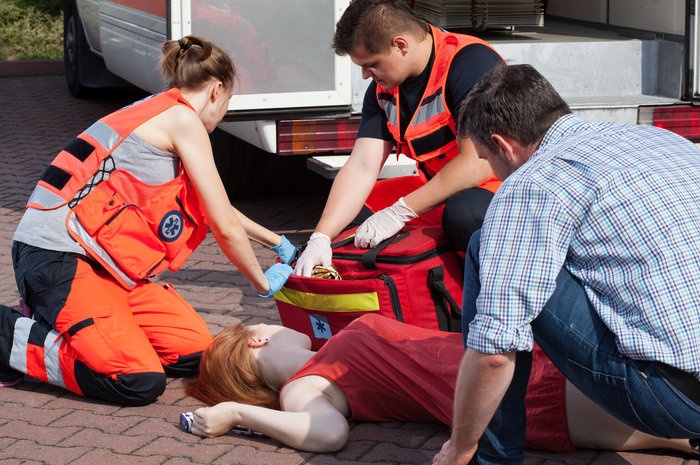
Working in healthcare, we have a lot of tools and technology at our disposal. And thank goodness we do! With every new medical advancement, we are able to improve our delivery of safe and efficient patient care.
Some medical devices have applications in many settings that we may not even realize due to working in our own specialized area. One example of this is the portable suction machine. Today, let’s take a look at the variety of situations in which this tool can be used to clear the airway of patients in need.
1. By a first responder in the field
First responders see it all and need to act quickly to establish those important ABC’s—airway, breathing and circulation. From a trauma with a lot of blood, to a drug overdose where the patient has vomited, to respiratory emergency where rapid intubation is needed, that portable suction machine will be a vital component of a successful response.
2. For a code that occurs outside of a patient care area
Ideally, every code within the hospital would occur right at a patient’s bedside, making for a more controlled situation. Yet this isn’t always the case. A patient could collapse while taking a walk down the hallway or a visitor could suddenly choke and lose consciousness while in the cafeteria. The code team may be forced to begin resuscitation on the spot. A portable suction machine can easily be brought with the crash cart to the patient’s side.
3. When in-wall suction fails
There may be times that in-wall suction doesn’t provide the proper vacuum strength or doesn’t work at all. This can be due problems with the central vacuum, clogged lines, or utility failures. A portable suction machine would be needed to act as a backup system until things are running properly.
4. During an evacuation
This is a situation that no hospital wants to encounter, but as we have witnessed during natural disasters over the last several years, it is something that every hospital needs to be prepared to execute. As part of a disaster preparedness plan, the safe evacuation of all patients, even the most critically ill, must be coordinated. Medically fragile patients would rely on portable suction machines to maintain a patent airway during this process.
5. For use outside of the hospital
Portable suction machines aren’t only used during emergencies. For example, patients receiving palliative care at home may require suctioning if they are unable to effectively clear their own secretions. Patients, including children, who are sent home with tracheostomies will need a portable suction machine to use as needed at home or at school.
As you can see, a portable suction machine does much more than just sit on the top of your crash cart. Whether for routine airway management, as a redundant system, or as a life-saving component of resuscitation, it is an important tool in healthcare today.















